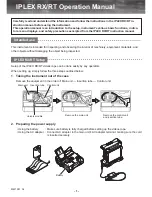
9-2
Return to
2600S-901-01 Rev. C / January 2008
Section 9: System Expansion (TSP-Link)
Series 2600 System SourceMeter® Instruments Reference Manual
Overview
The Keithley Instruments Series 2600 System SourceMeter
®
TSP-Link™ is an expansion
interface that allows the instruments to communicate with each other. The test system can be
expanded to include up to 16 TSP-Link-enabled instruments.
Master and Slaves
In a TSP-Link system, one of the nodes (instruments) is the Master and the other nodes are the
Slaves.
The Master can control the other nodes (Slaves) in the system. When any node transitions from
local operation to remote, it becomes the Master of the system; all other nodes also transition to
remote operation, and become its Slaves. When any node transitions from remote operation to
local, all other nodes also transition to local operation, and the Master/Slave relationship between
nodes is dissolved. For more information about remote and local operations, see “
” in Section 2.
A Slave is a node that is controlled by the Master. The GPIB and RS-232 command interfaces of
the Slaves are disabled.
System configurations
A TSP-Link system can be used without a PC (stand-alone system) or as a PC-based system.
Stand-alone system
– In a stand-alone system, scripts that control the system are executed from
the front panel of one of the instruments. No PC connection is required. In
, a script can
be run from the front panel of any one of the instruments.
PC-based system
– In a PC-based system, the GPIB or RS-232 interface to any single node
becomes the interface to the entire system. In
, the system can be controlled via the
GPIB or RS-232 interface of Node 1.
Connections
Connections for an expanded system are shown in
. As shown, one unit is optionally
connected to the PC using the GPIB or RS-232 interface. Details on these PC communication
connections are covered in
.
As shown in
, all the units in the system are daisy-chained together using LAN crossover
cables.
















































